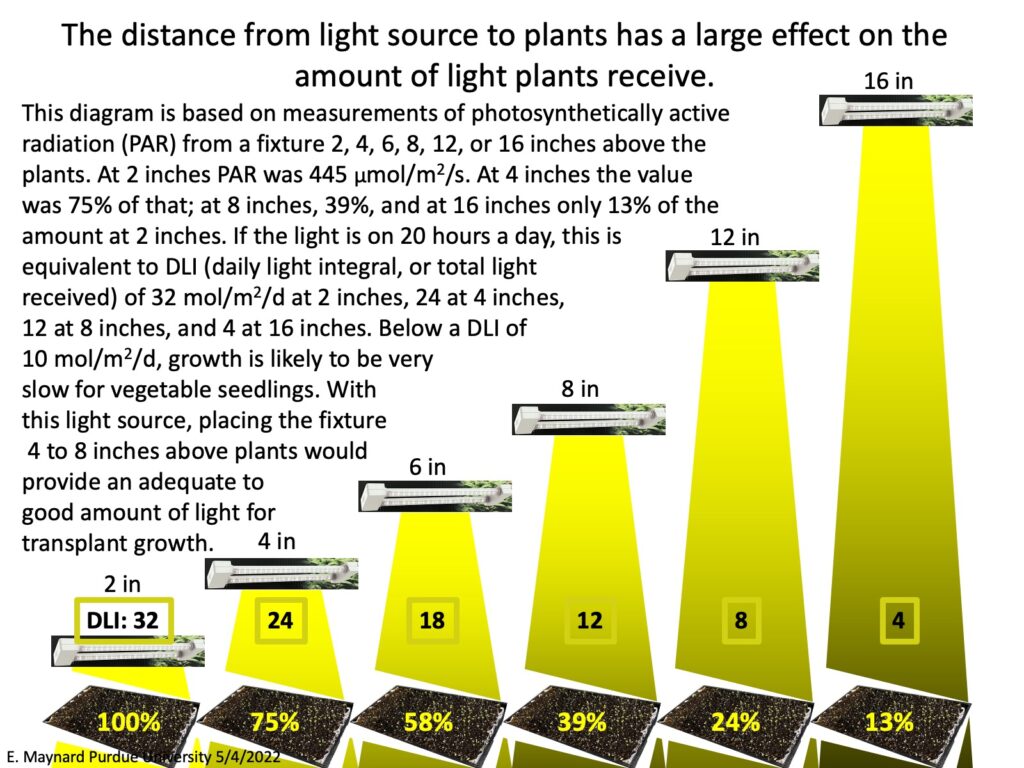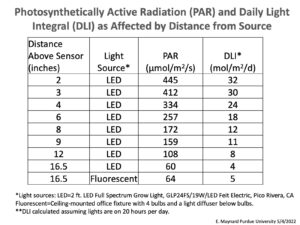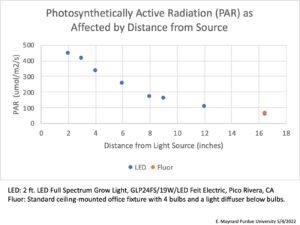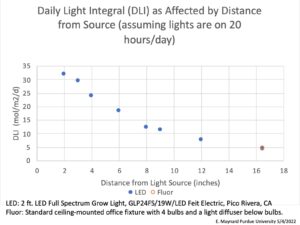Beginning and small-scale vegetable growers often grow transplants indoors with supplemental light instead of in a greenhouse. Guidelines for supplemental light nearly always mention that the closer the light is to the plant, the more usable light it provides. Cool white fluorescent lights have been used for this purpose for many years. At this point in time, LED fixtures are also readily available.
I was curious how much light (in the form of PAR*) an LED fixture from a hardware store would provide at various distances and so made some quick measurements for demonstration purposes. The diagram, graphs, and table below summarize the information collected. It is a good reminder of how much difference distance from the light source makes. At 12 inches above the light sensor, the light fixture provided only one-quarter as much light as at 2 inches, and the light level was not adequate for vegetable seedling production. Plants would need to be about 4 to 8 inches from the light for reasonable growth.

Fig, 1. Distance from light source to plants has a large effect on the amount of light plants receive.
Light provided by an office fluorescent fixture was measured only at one distance: 16 inches. At that distance, both the LED and the fluorescent fixture provided about 13% of the light compared to the LED lamp placed 2 inches above the sensor.

Table 1. Photosynthetically active radiation and daily light integral as affected by distance from light source.
Seedlings grown without enough light grow slowly and are spindly and week. If you grow transplants using supplemental light, this is worth paying attention to!
For more information about light measurements and light in greenhouses and outdoors, see Measuring Daily Light Integral in a Greenhouse, Seasonal Daily Light Integrals Across Indiana, and Determining the Economic Value of Providing Supplemental Light to Lettuce During Winter Production.
*Definitions:
Photosynthetically active radiation (PAR): Radiation with wavelengths between 400 and 700 nanometers, which includes most light that can be used by plants for photosynthesis. The units are micro-mols of photons (µmol) per square meter per second. For people, this measurement corresponds roughly to the brightness of light at any instant.
Daily light integral (DLI): The total amount of light available for photosynthesis in a day; the sum of all the PAR in a day. The units are mols of photons per square meter per day.

